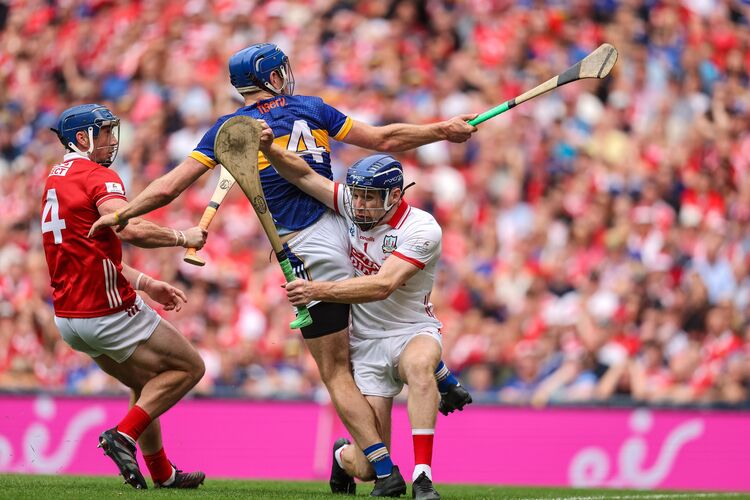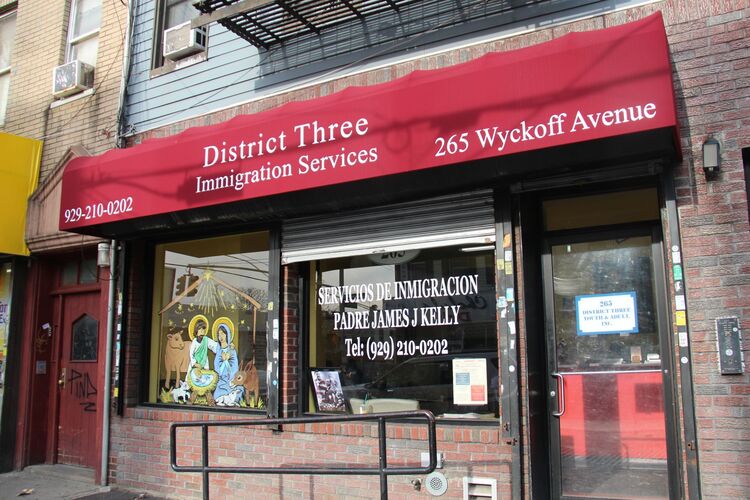Jim Dwyer
By Jim Mulvaney
Jim Dwyer, one of the most celebrated journalists of his generation, never lost the humility of being raised in the hardscrabble streets of northern Manhattan, a Catholic school boy and son of Kerry.
His father a school custodian, his mother an emergency room nurse.
Decades later, Jim marveled to me that he still lived within five blocks of his childhood home. “I’ll probably die there,” he said, with a farmer’s grin. He died Thursday, October 8, in Memorial Sloan Kettering Cancer Center. His driver’s license still listed his address as Washington Heights.
Jim Dwyer was in the flock of young talent brought to New York Newsday in the mid—1980s to toil alongside the greats of a prior generation: Murray Kempton, Jimmy Breslin, Mickey Carroll, and Sydney Schanberg. He admired them but marched to his own beat, pounding the pavement with thick soled shoes and the slacks and blazer of Catholic school boy.
A colleague once complained that Dwyer refused to take a car service from the New York Newsday offices on Third Avenue out to the Queens Courts in Kew Gardens. “He doesn’t get it,” she said, “he doesn’t realize that we’re now in the major leagues.”
She was wrong. Real New Yorkers didn’t ride in black Lincoln Town Cars. They were slow and isolating, its riders buffeted from the aromas and flavors of the city.
Dwyer returned to the subway, taking over a column from the late Dennis Duggan devoted entirely to New York’s City electrified cardiovascular system.
“The subways have become the great public commons of the city,” he wrote, “where acts of the heart and warped adventures are played out every day. Every rank of New Yorker is indentured to the subway. Nobody rides first class.”
Jim looked beyond the obvious. A burst water main that flooded Carroll Gardens in 1994 sent him to the history books and introduced readers to John H. Rhodes, a pipe inspector, “a cranky man who was feared by the mediocre” inspecting water pipes being installed under city streets in the 1850s, rejecting more than half of the stock after whacking them with a hammer “and listened for the flat sound, the dull answer that said No Good.”
Our last long conversation was about New York City’s water works, Jim's eyes sparkling as he ticked off minute details of pitched tunnels, his voice giddy with awe.
When a misguided tycoon from Chicago shuttered New York Newsday, Dwyer fought back, searching, in vain, for investors while making sure all of his colleagues, the talented and middling, found new work. He was the subject of a brief bidding war and landed at the New York Daily News, spending six years banging out three columns a week.
In 2001 he took a demotion, dropping the column and joining the New York Times as a general assignment reporter.
“Time for a change,” he told me, “I need to get off the sinking ship of tabloid and find something more secure.”
It surprised no one that he was one of the lead reporters when terrorist-piloted airplanes slammed into the World Trade Center. He focused on details, later producing a riveting account of the last minutes of people inside the building called “102 Minutes Last Words at the World Trade Center.” He would turn this reporting into a book with our friend Kevin Flynn.
In 2018, Jim wrote a premature obituary for Coogan’s, the pub born in the midst of crack wars of the 1980s, threatened with closure by the landlord, New York Presbyterian Hospital.
Smart money says you can’t fight city hall; smarter still is the futility of battling a rich hospital empire. Dwyer reminded us of the place that survived the dark times: “Where others saw a broken neighborhood and city, they built a sprawling, homey space that erased ethnic, class, racial and religious boundaries, fully embracing and embodying the promise of New York.” Along with fellow patron and Broadway luminary Lin Manuel Miranda, Dwyer shamed the hospital into backing down and preserving the landmark.
It was a foreboding story he penned in April of this year, announcing that Coogan’s was yet another victim of the Covid pandemic.
In June, my wife Barbara Fischkin, who had been a New York Newsday reporter during Dwyer’s time, called our old friend. Our son, Dan, was on lockdown in his group home for more than one hundred days. Regulators in Albany had issued blanket isolation orders, failing to distinguish between residents like Dan, hale and hearty yet mute with autism, and more medically fragile folks who should have been protected.
We had lined up a possible spot on WNBC-TV news, an attempt to shame Cuomo into opening the doors. Dwyer opined that TV has more clout these days, but offered to chime in if the story didn’t air.
He told my wife that he’d do what he could, but added that he might be busy, that day heading to the hospital after a recent diagnosis of lung cancer. He was a rare tabloid guy who didn’t smoke cigarettes, but he did spend countless hours inhaling World Trade Center rubble.
Jim improved but suffered a setback.
Former Newsday colleague Michelle Salcedo constructed an electronic bucket brigade to deliver messages to the hospital, a stream of notes from friends to be delivered by his beloved wife, Cathy, and daughters, during good moments.
Last week, I tried to send a clip of Seamus Heaney reading his poem “Scaffolding,” a love note to his wife about surviving hard times.
Earlier notes, Irish poems from Yeats and John Montague, had gotten through.
This note came back Monday with a note: Undeliverable. It was on my “to do list” to resend today.
Alas.







